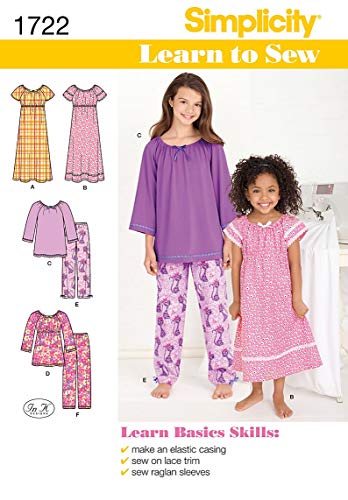Have you ever found yourself itching to start a new sewing project but felt overwhelmed by the cost of patterns? You’re in luck! Free sewing patterns are a fantastic resource for both beginners and seasoned sewists looking to expand their skills without breaking the bank.
Benefits of Using Free Sewing Patterns
Free sewing patterns offer a wealth of advantages, making your sewing journey more enjoyable and cost-efficient.
Cost-Effectiveness
Using free sewing patterns eliminates the need to spend money on purchasing designs. Websites and online communities often provide downloadable patterns at no cost. This enables you to redirect funds towards other essential supplies like fabric, threads, and accessories. Even if you’re on a tight budget, starting new projects becomes accessible and affordable.
Opportunity to Learn and Experiment
Free patterns provide an excellent opportunity to broaden your skills. Try out new techniques and styles without financial risk. If you’re a beginner, you can practice with various projects without worrying about wasting purchased patterns. Advanced sewists can experiment with complex designs, enhancing their creativity and expertise. Accessing a variety of patterns allows you to refine your skills and handle diverse projects with confidence.
Popular Sources for Free Sewing Patterns
Finding free sewing patterns can open up a world of creative possibilities. Many sources provide these patterns, making it easy to start on your next project without extra cost.
Online Communities and Blogs
Online communities and blogs are treasure troves for free sewing patterns. Websites like Sewing.patternreview.com and Craftsy.com offer extensive libraries of patterns shared by sewing enthusiasts. Blogs such as Tilly and the Buttons provide patterns along with step-by-step tutorials. Joining forums like PatternReview allows you to exchange patterns and tips with other members, broadening your sewing repertoire.
Public Libraries and Non-Profits
Public libraries often offer access to a variety of sewing patterns. Many libraries subscribe to digital platforms like Hoopla and OverDrive, where you can find sewing books with patterns. Non-profit organizations, such as Project Linus, provide free patterns for charity sewing projects. These resources ensure you have access to a wealth of patterns and guides without any cost, helping you to learn and make a difference in your community.
Tips for Selecting the Right Free Sewing Patterns
Choosing the right free sewing patterns ensures fun and rewarding projects. Consider several key factors to make your selection wisely.
Assessing Skill Level
Match the pattern to your sewing experience. Beginner patterns typically have simple instructions and fewer pieces, such as tote bags or pillow covers. Intermediate patterns might include more steps and techniques, like darts or zippers, which suit sewists comfortable with basic construction. Advanced patterns often involve complex stitching, multiple layers, or intricate details, making them ideal for seasoned experts.
Understanding Pattern Reviews
Check reviews before choosing a pattern. PatternReview and other platforms provide feedback on the clarity of instructions, required skills, and potential issues. Reviews often highlight modifications made by other sewists, offering insights that might save time and effort. Additionally, photos from other users can help gauge the final look, ensuring your project meets expectations.
Best Practices for Working With Free Sewing Patterns
Working with free sewing patterns can be rewarding and fun. Follow these best practices to ensure success and satisfaction in your projects.
Printing and Assembling Patterns Correctly
When using free sewing patterns, ensure accurate printing and assembling. Download the pattern file and open it using a PDF reader. Check for any scaling instructions; most patterns need to be printed at actual size or 100%. Print a single page to check if any test squares measure correctly.
After printing, organize the pages in numerical order. Trim the edges if required and align the markings from each sheet. Use tape or glue to secure the pieces in place. Smooth out any wrinkles to maintain accuracy. This step is crucial for ensuring that your final project matches the intended design dimensions.
Adjusting Patterns to Fit
Free sewing patterns may not always fit perfectly. Measure your body carefully and compare your measurements with the pattern’s size chart. Note any differences and mark them on the pattern. Adjustments might include lengthening or shortening, widening or narrowing areas such as the waist, hips, or bust.

If the pattern doesn’t include adjustment lines, create your own by drawing horizontal lines at the points you need to alter. Spread or overlap the pattern pieces to achieve the desired fit. Tape the adjustments and smooth any transitions to avoid uneven seams. Making these modifications ensures a better fit and more comfortable final garment.
Conclusion
Exploring free sewing patterns can be a fantastic way to expand your sewing skills and creativity without breaking the bank. Whether you’re just starting out or you’re an experienced sewist, there’s always something new to learn and create. Remember to choose patterns that match your skill level and take advantage of pattern reviews to avoid common pitfalls. By following best practices for printing, assembling, and adjusting patterns, you’ll ensure your projects turn out just the way you envision. Happy sewing!













